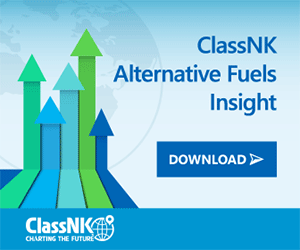Have you ever wondered how we make decisions? Often, the way information is presented has an outsized effect on what we choose or what we believe, and this influence extends far beyond surface-level preferences.
The concept of framing explains why we sometimes make choices that defy pure logic and why certain options feel more appealing than others, even if they are objectively the same. Understanding framing and its effects can reveal the hidden ways we are swayed by presentation and perception, providing insights into how framing works, why it affects us so deeply, and how an awareness of this effect can lead to smarter, more informed decisions in everyday life.
What is the framing effect?
The framing effect is a cognitive bias that impacts decision-making based on how choices are presented—specifically, whether the choices are framed as potential gains (positive framing) or losses (negative framing).
By highlighting positive or negative aspects of choices, framing taps into emotional responses and mental shortcuts we rely on to make quick decisions. When a choice is framed as a gain, we naturally gravitate towards it, driven by the optimism associated with achieving something positive. Conversely, negative framing, or framing choices in terms of losses, often leads to avoidance because it triggers a sense of potential regret or fear of making the wrong choice.
By subtly influencing our perceptions, framing has a powerful effect on how we make decisions across different areas of life, from personal finances to healthcare, marketing, and more.
How does framing work?
Framing effects occur when our decisions are swayed by how information is presented in either a positive or negative light. This bias is closely tied to prospect theory, developed by behavioral economists Daniel Kahneman and Amos Tversky in 1979. According to prospect theory, people tend to avoid losses more powerfully than they pursue gains, leading them to weigh potential negative outcomes more heavily in decision-making. Kahneman and Tversky found that individuals often make choices that deviate from strict rationality because of mental shortcuts, known as heuristics, that influence their decisions. Heuristics can simplify the decision-making process but can also lead to errors or biases.
Two important heuristics related to framing are the availability heuristic and the affect heuristic. The availability heuristic leads us to favor options that are easier to recall or imagine, often because they are more recent or vivid. For example, after hearing about a recent airline accident, people may be more inclined to choose other travel methods, as the accident is more accessible in their memory.
The affect heuristic, on the other hand, is driven by emotional responses; we tend to favor options that provoke an immediate positive emotional reaction. These heuristics play into how framing works, subtly guiding our choices in ways we may not be consciously aware of.
Consider a simple example: Imagine you’re looking for a gym membership and come across two options:
- Option A is priced at $30 per month with no discounts.
- Option B is regularly $60 per month but is currently 50% off, bringing the cost down to $30.
Even though both options cost the same, customers are more likely to be drawn to Option B. Option A frames the expense as a straightforward cost of $30, while Option B creates the perception of a $30 “savings.” Framing Option B as a discount or gain makes it feel like a better deal.
This perception, even though logically unjustified, demonstrates the strong influence of framing in decision-making. People are more inclined to choose options that feel like they offer more value, even when the outcome is the same.
How framing influences safety
Framing doesn’t just influence individual choices; it also shapes how organizations handle safety, responsibility, and decision-making. Nippin Anand, author of Are We Learning from Accidents?: A Quandary, a Question, and a Way Forward, explains how framing affects people’s willingness to speak up and challenge authority. He uses the Costa Concordia disaster as a powerful example of how framing shaped both public understanding and organizational responses.
The Costa Concordia accident on January 13, 2012, remains one of the most notable maritime disasters in recent history. The cruise ship, carrying over 4,200 passengers and crew, struck a rock near the Italian island of Giglio, causing a large tear in its hull. Sadly, 32 people lost their lives. Investigations showed that the captain, Francesco Schettino, had deviated from the planned route, steering too close to the shore in a risky maneuver.
Public discussion and investigations mainly focused on why crew members didn’t question the captain’s decisions, framing the disaster as a “failure to speak up.” This view emphasized a lack of assertiveness and responsibility among the crew, leading to calls for more training in “soft skills” like communication.
Anand challenges this framing, arguing that it misses the larger issues. Focusing only on individual actions ignores systemic factors, such as hierarchical dynamics, psychological safety, and authority structures in maritime settings, which can make it hard for crew members to speak up. Reframing the incident to include these systemic barriers highlights deeper issues like the captain’s leadership style, gaps in crew training, and power dynamics on the bridge.
The Costa Concordia case illustrates how reframing an issue can reveal underlying, complex factors that affect safety, helping us move toward lasting improvements rather than just addressing surface-level causes.
Think of frames as glasses we wear. Just like those glasses, frames act as a mental structure and influence the way we see the world,
… Anand notes in the video.
What can we learn if we leave frames behind?
Recognizing and questioning the frames through which we view information empowers us to make more thoughtful, well-rounded decisions in both personal and professional settings. By stepping back and examining how choices are presented, we can avoid the pitfalls of cognitive biases and move toward solutions that address root causes, not just symptoms.
This shift in perspective not only helps us make better individual choices but also promotes a culture of openness and critical thinking within organizations.
Ultimately, understanding framing allows us to navigate complex situations with greater clarity and make decisions that foster meaningful, positive change.





























































